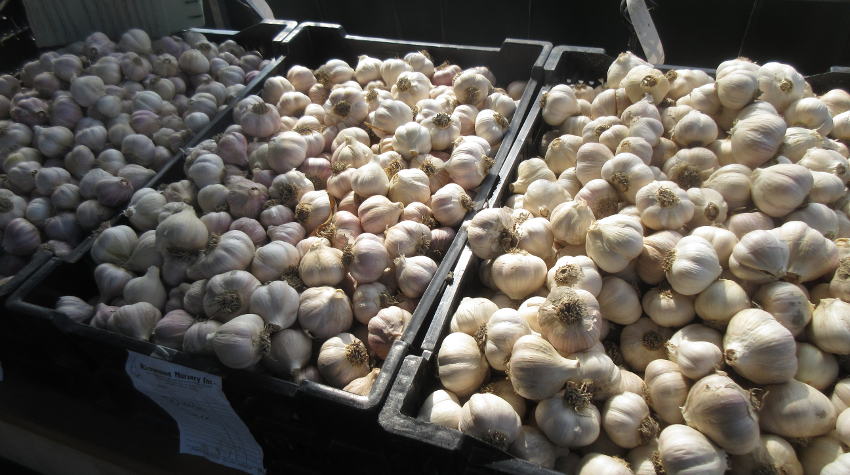A nearly indispensable food that's easy to grow. What to learn how?
There's nothing like fresh garlic. And if you've ever tried imported garlic from Asia beside locally grown garlic, you will be a true believer in local garlic.
Garlic is actually quite easy to grow. Like most plants there are technically many varieties of garlic available. The size, taste, and cold tolerance are all different between varieties. Some are hotter, some mild and monstrous, some that perfect balance for your pallet.
Growing garlic really is easy. Far easier than you may expect. It's also a very compact plant so it's great to grow where you may have limited space. My first trial at garlic at home was along the back edge of my front flower beds between the house and our flowers. This narrow strip was perfect since it was sheltered nicely and the garlic was taller than our flowers to it added a little extra interest to the garden. By the time the garlic was done and ready for harvest, the annual flowers took over the bed. It was a win-win situation.
First you need to select your bulbs. Choose ones that are firm and in-tact without damage. Bulbs should be separated into individual cloves for planting. Though larger cloves have a greater tendency to produce larger bulbs, smaller cloves often produce a concentrated flavour. Personally, I think variety is the spice of life so I make sure to get a few different kinds to hedge my bets and experiment with the diversity and flavours available.
You plant garlic very much like any other fall bulb like tulips or daffodils in the fall. Pointy side up, and plant about 1 1/2 to 2 times as deep as the bulb is around. That puts garlic at roughly 2" or 5cm deep in the soil. Commercial garlic gets spaced about 6" or 15cm apart, and 12" or 30cm between rows. That makes it quite compact and high density compared to other plants, perfect for in-fill planting.
Once it's planted, water it in well. Unlike tulips, rodents typically avoid your garlic which is very handy. Adding a touch of manure or compost on top always helps to feed the bulbs. Make sure the ground stays moist until the ground freezes. The little bit of moisture helps prevent cold damage (remember: wet roots don't freeze).
In the spring, your garlic will sprout up with a central stalk and leaves coming off the sides. Sometime in June you will start to see the beginning of the flower. It will come from the centre of the stalk and will be all curled up with a tear-drop shape at the top where the flower would eventually open. That's the garlic scape and it should be removed to help the bulbs form better. Garlic scapes aren't to be wasted. They taste wonderful sauteed in butter, added to sauces, or even preserved into a pseudo pesto for use later.
Once the leaves have essentially died off in the summer, it's time to harvest. Dig up your garlic and let it sit in the sun. Fresh out of the ground there's lots of moisture in the bulb and the skins aren't well formed. They can be eaten as-is, but the flavours intensify and develop as they're dried. Give them a couple weeks to dry up and enjoy your harvest. There really isn't anything quite like fresh garlic.

